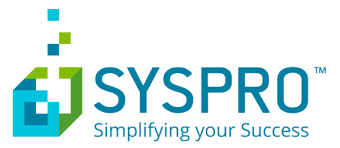
A four-step strategy for building procurement resilience in a volatile world
July 21, 2020
By
Kristina Urquhart
Brought to you by Paulo de Matos, Syspro
Going forward, businesses are likely going to be operating in more uncertainty and facing more unexpected crises, placing extra burden on the procurement and supply chain functions.
 Photo: Goodvibes Photo/Getty Images
Photo: Goodvibes Photo/Getty Images The role of procurement is about ensuring that business operations continue like clockwork no matter how disrupted the business environment is.
This involves understanding the current environment as well as foreseeing the potential future situation and preparing for it – specifically market changes, selecting and evaluating new vendors, cutting costs without adding risk to the business, negotiating and renegotiating contracts, ensuring traceability of all incoming raw materials, and reducing risk along the supply chain.
The challenge is that all businesses currently operate in a VUCA world, meaning that there is the constant pressure of market volatility, uncertainty, complexity and ambiguity. Going forward, businesses are likely going to be operating in more uncertainty and facing more unexpected crises, placing extra burden on the procurement and supply chain functions.
Recently released Canadian trade statistics indicate that in April imports fell by 25 per cent from their March level and exports decreased by 30 per cent. From global trade disputes, to Brexit, volatile exchange rates, fluctuating commodity prices, civil unrest, and the global pandemic, procurement has needed to be more agile and resilient than ever before.
These challenges have directly impacted the procurement of raw materials and intermediate goods, which are shipped as a part of the global value chain, and then usually assembled in another country. Within the global value chain, China is a large producer of components and assemblies, but with the recent pandemic many of these distribution channels were shut down with no notification and very little time to replace suppliers.
As a means of proactive response, businesses should look at a four-step strategy to build procurement resilience in the wake of increasing vulnerabilities:
Step 1: Anticipate and plan for uncertainty
Today, the rigorous process of manually gathering as well as interpreting supplier, market, and environmental information is being replaced with a data-driven approach. This enables real-time decision-making with businesses building AI-driven integrated data ecosystems that are supported by predictive analytics. Resultant insights can then be applied in planning both strategy and performance.
In addition to outsourcing solutions to understand the changing needs of the macro environment, manufacturers and distributors can use technologies such as enterprise resource planning to accurately forecast demand, identify stock availability, establish supplier lead times, cost, material requirements, contingency stock requirements and warehouse capacity constraints, and integrate this all into their unique business model.
By making a direct link between supply and demand, manufacturers and distributors can anticipate and better plan for uncertainty. This will ultimately improve the cash flow of the organization, because procurement teams can better determine purchasing requirements based upon demand, and hedge against the obsolescence and waste of critical raw materials stock.
Step 2: Embrace the limitless potential of digitalization
With the pandemic and global lockdowns, many manufacturers began to realize the true potential of digital transformation. By embracing a digital approach, procurement can form a real-time part of business operations by improving agility and preventing wastage by only procuring and storing the required raw materials. Further benefits can be found by storing less inventory and improving the ability to rapidly address changes in demand.
Digitalization can assist strategic sourcing to become more predictive, make transactional procurement more automated, and supplier relationship management more proactive. Digital procurement solutions are enabling the future by providing access to previously unavailable insights or bringing order to massive (but unstructured) data sets. This ultimately drives more complex analysis and better supplier strategies, enabling more efficient operations.
A SYSPRO customer, Wen Ken needed to replace its existing disparate systems with a single fully integrated, robust planning solution. Visibility into real-time stock information was lacking, and the company’s data was in separate systems. According to Fu Shou Jeen, executive director of Wen Ken, “One of the major benefits we’ve experienced has been the improvement of inventory and costing accuracy from 92 per cent to 99.5 per cent.”
Step 3: Enable end-to-end supply chain visibility
Numerous global crises of varying nature have resulted in procurement teams scrambling for local supply alternatives to ensure that they can still fulfil new and existing orders seamlessly. End-to-end supply chain visibility is therefore a necessity to ensure procurement accuracy and resilience. This provides a single platform where everything from early-stage planning based on forecasts through master production schedules (MPS) to final delivery can be tracked and traced in real-time.
These advanced insights are needed to improve customer service, reduce costs, help with regulatory directives, and mitigate interruptions that will affect supplier inventory levels and ultimately product delivery. With customers demanding better service, embedded AI capabilities provide real-time intelligence, actionable insights, and recommendations that reduce disruption time from days to hours, improving customer service in line with expectations.
Step 4: Focus on building a robust procurement model
There are no standard business models to help businesses manage unprecedented events like the pandemic. It has exposed the fragility and the thin margins on which many global businesses run. Highly indebted companies, working from lean inventory, supported by just-in-time supply chains, and staffed by short-term contractors are suffering the longer-term impact of market unpredictability.
Companies have realized that by encouraging their procurement departments to pursue the holy grail of greater efficiency through wholesale cost-cutting, have sacrificed robustness, resilience, and effectiveness. In many cases, it has turned out they have sacrificed the business itself.
Manufacturers and distributors need to identify their own business model that will suit their own business. Copying competitors is no longer viable. They will also have to consider how to reengineer their supply chains to be resilient by design, factoring in increased complexity and uncertainty as the new normal. In the months and years ahead, effective supply chain management will be all about agility and finding the perfect balance between just-in-time processes and just-in-case scenarios while reducing risk as much as possible.
The need for an enterprise-wide single source of truth
An enterprise resource planning (ERP) software can be the enterprise-wide single source of truth that helps procurement to remain resilient in several ways. First and foremost, an ERP brings a single integrated platform that shares all of the information across all functions.
This integration allows manufacturers to optimize inventory forecasting capabilities to improve management of purchasing requirements, while alternative potential suppliers can be identified through supplier portals, and invitations using a request for information or even a request for quote, can be shared with suppliers.
Bearing in mind that the ongoing procurement of raw materials can quickly consume all of the cash reserves of the organization and needs to be agreed by the organizational leadership if it places the organization in any risk. The integrated nature of an ERP system allows everyone to have the full picture which improves the quality of the decision-making within the organization.
By planning for the unknown, implementing the right technology for end-to-end supplier visibility and building a robust procurement model, manufacturers and distributors can ensure procurement resilience in a VUCA world. Download this eBook to learn about strategies that can make your supply chain agile and resilient.
Paulo de Matos is chief product officer at SYSPRO Canada.
Advertisement
- Survey: Automation standards ‘extremely important’ in future, say engineers
- Welding automation Q&A with Hubert Bethlehem, IRCO Automation